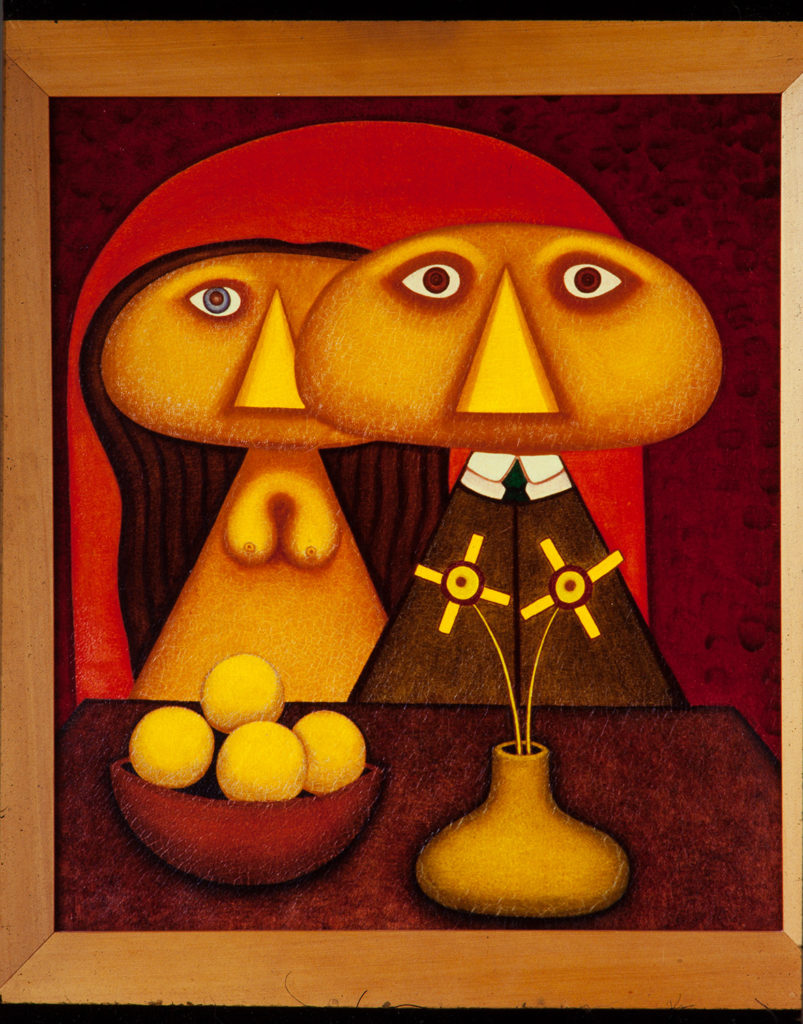CURATORS Aaron Lister, Damian Skinner OTHER VENUES Auckland Art Gallery, 26 January–21 April 2002; Manawatu Art Gallery, Palmerston North, 4 May–30 June 2002; Dunedin Public Art Gallery PUBLICATION essays Kevin Ireland, Aaron Lister, Damian Skinner
Too many people ask me what kind of painter I am. I wish they would stop talking and use their eyes.
—Michael Illingworth
Michael Illingworth (1930–88) is a key figure in the emergence of a professional art scene in New Zealand in the 1960s and 1970s. The British-born painter's pitched battles with conservative culture and art bureaucracy are legendary. In 1965, his painting As Adam and Eve (1963) was the subject of an obscenity complaint. Police attempted to remove the painting before the Attorney General dismissed the claim, which would have become a legal test case for art censorship. In 1966, he was the first Frances Hodgkins Fellow, but left midway through his tenure, claiming that the conditions hindered rather than fostered professional practice. The following year, his entire show at Barry Lett Galleries, Auckland, sold to a single buyer before the opening—the first time this had happened in New Zealand.
A Tourist in Paradise Lost is Illingworth's first survey show. It centres on his well-known figurative paintings of the 1960s and 1970s, featuring such characters as Adam and Eve, the nature deity Tawera, and Mr and Mrs Piss-Quick—symbols of middle-class mediocrity living in the suburbs beneath a rainbow that symbolises the rich possibilities of an imaginative life they lack. There are also his lesser-known early abstractions and tachiste-inspired expressionist paintings (which synthesise lessons learnt while living in Europe between 1959 and 1961), his landscape paintings (which are mythic fertility stories), and his late ‘art world’ paintings (featuring ‘Die Kunst Fuher’, a one-eyed gallery director; an equally impaired Colin McCahon expert; and a gallery full of unappreciative Piss-Quicks). Here, Illingworth is at his most satirically savage.
Illingworth's work offers a compelling personal mythology, demonstrating his counterculture ideals, his love of nature, his faith in the transformative power of art, and his deep reverence for Māori culture. His work is typified by a clash between anxious critical content and polished form. He renders his subjects through a refined style based on applying multiple paint layers and using glazing to produce luminous enamel-like surfaces. His works are often called ‘jewel-like’.
Like Illingworth's paintings, the show asks us to pick a side. Do we stand with the Piss-Quicks, comfortable in middle-class mediocrity, or can we see through the trappings of consumer culture to the deeper truths of existence, our world, and art?
Michael Illingworth: A Tourist in Paradise Lost is presented as part of a suite of exhibitions, Four Faces of New Zealand Art: Rita Angus, Michael Illingworth, Gavin Hipkins, Peter Peryer.





























































